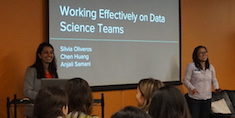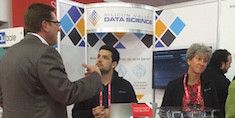
How to Choose a Data Format
In this post we provide a framework for choosing a data format, and provide some example use cases.
With a background in computer engineering and visual analytics, Silvia has worked on several projects helping clients explore and analyze their data. She is interested in building and optimizing the infrastructure and data pipelines used to gather insights from various datasets.
Silvia has given multiple talks at data science industry conferences, and is an author on multiple academic papers, including:
Silvia holds an MS in Computer Engineering from Purdue University, and a BS in Computer Engineering from Michigan Technological University.

In this post we provide a framework for choosing a data format, and provide some example use cases.

On April 21st, SVDS hosted the WWCode Silicon Valley chapter in our Mountain View office; we gave a talk titled Working Effectively in Data Science Teams.

Several of our presenters were interviewed at Strata San Jose. If you missed the conference, check out these interviews below to catch up on some of the topics that were on our minds.

It’s easy to become overwhelmed when it comes time to choose a data format. In this post Silvia gives you a framework for approaching this choice, and provide some example use cases.
DataEngConf features talks and workshops aimed at bridging the gap between data scientists, data engineers, and data analysts. We’ll be there, giving tips on choosing the right format for your data.